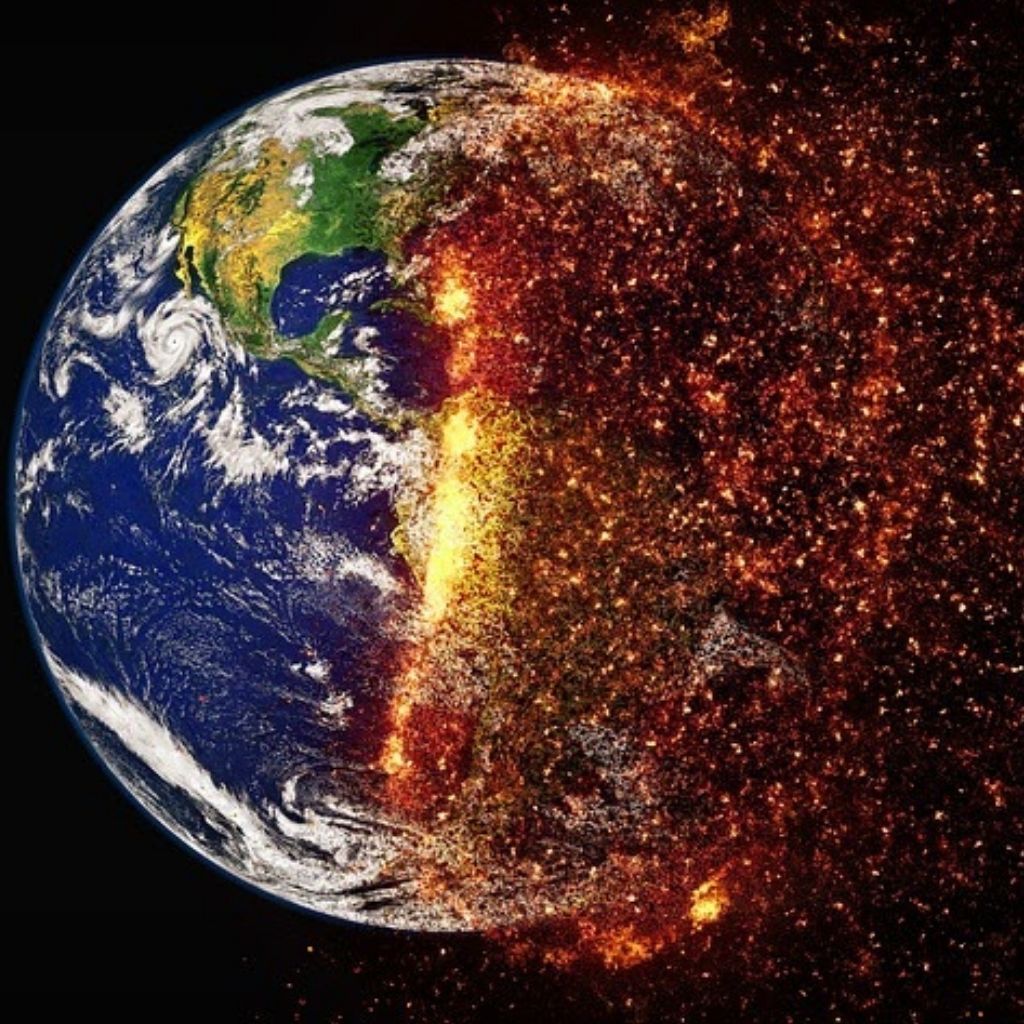It is a well-known fact that solar energy is an essential factor for the survival of life on the earth in which we live. The heat of the sun warms the earth and 90% of the sun’s rays that reach the earth are reflected back into the atmosphere. Greenhouse gases such as carbon dioxide (CO2), nitrogen oxides (NO3), ozone (O3), methane (CH4), water vapor (H2O) and chlorofluorocarbons (CFCs) are capable of absorbing this reflected sunlight. Due to the increase in greenhouse gases in the Earth’s atmosphere, most of the sunlight is not reflected back into the upper atmosphere but remains in the lower atmosphere. This causes the increase of temperature in the lower atmosphere and the Earth’s surface. Due to human activities such as deforestation, fossil fuel burning and the use of chemicals, these greenhouse gases are on the rise and pose a serious threat to wildlife. Forests, deserts, tropics, islands, polar, mountain systems, wetlands, swamps, coastal marshes and corals are the most vulnerable areas, and these ecosystems are highly vulnerable to heat as well as rainfall and climatic hazards. In particular, this article discusses the impact of global warming on global food supply, and food security is by far the most focused topic in the world.
Consumption pattern based on food chain
The elimination of hunger and sustainable consumption, which are also included in the Sustainable Development Goals, underscore the food crisis that the global community is already facing. The food system in the globe is built on food chains. A food chain is a linear sequence that shows how nutrients and energy travel between organisms as one organism eats another. The global food system is a food network connected by such food chains. Every food chain starts with a plant-based component which means the origin or producer is always a plant in the global food system. Primary producers are often photosynthetic organisms such as plants, algae or cyanobacteria. The organisms eaten by primary producers are called primary consumers, and primary consumers are usually herbivores. The organisms that eat the primary consumers are called secondary consumers and the secondary consumers are usually carnivores. Organisms that eat secondary consumers are called tertiary consumers. These are carnivores that eat carnivores such as eagles or large fish. Some food chains have additional levels, i.e., carnivores that are consumed by tertiary consumers who are quadruple consumers.
In the food chain, one organism eats another organism and receives energy from that organism, and on average only 10% of one organism’s energy travels to another organism. Therefore, the transmission of energy in long food chains is inefficient. Thus, if the primary producer contained 10,000 kcal of energy, the primary consumer would carry 1000 kcal and the secondary consumer 100 kcal. This shows that vegetarian diets are high in energy. Therefore, a greater inclination towards a plant-based diet will give the body more energy, and this will explain the stimulus to reduce the meat intake promoted by our “Meatless Monday” project.
How global warming affects food chains
Global warming directly affects plants, resulting in a 10-50% reduction in plant growth. Rising temperatures limit the amount of moisture and water needed for plant growth, resulting in reduced soil fertility and stunted plant growth. If there is a shortage of herbal foods in the world, it will have a direct impact on the survival of all herbivores, carnivores and omnivores. Finally, it is important to note that no matter what diet we follow, we are always one link in a food chain that begins with a plant product. Therefore, the growth of plant producers on the path to a sustainable consumption pattern is even more important to secure the global food system. The promotion of agriculture and home gardening makes a great contribution to this. The resulting food chain depends on a large number of organisms and contributes to increasing global food supplies. Finally, let us consider it our responsibility to adopt a sustainable food consumption pattern that will ensure the survival of all living things on earth.
Author: Chalani Marasinghe
References
McDonald-Madden, E., Sabbadin, R., Game, E. T., Baxter, P. W., Chadès, I., & Possingham, H. P. (2016). Using food-web theory to conserve ecosystems. Nature communications, 7, 10245.
Egerton, Frank. (2007). Understanding Food Chains and Food Webs, 1700–1970. Bulletin of the Ecological Society of America.
Everuss, Louis & Lever-Tracy, Constance. (2020). Global Warming. 10.1002/9781405165518.wbeosg077.pub2.

